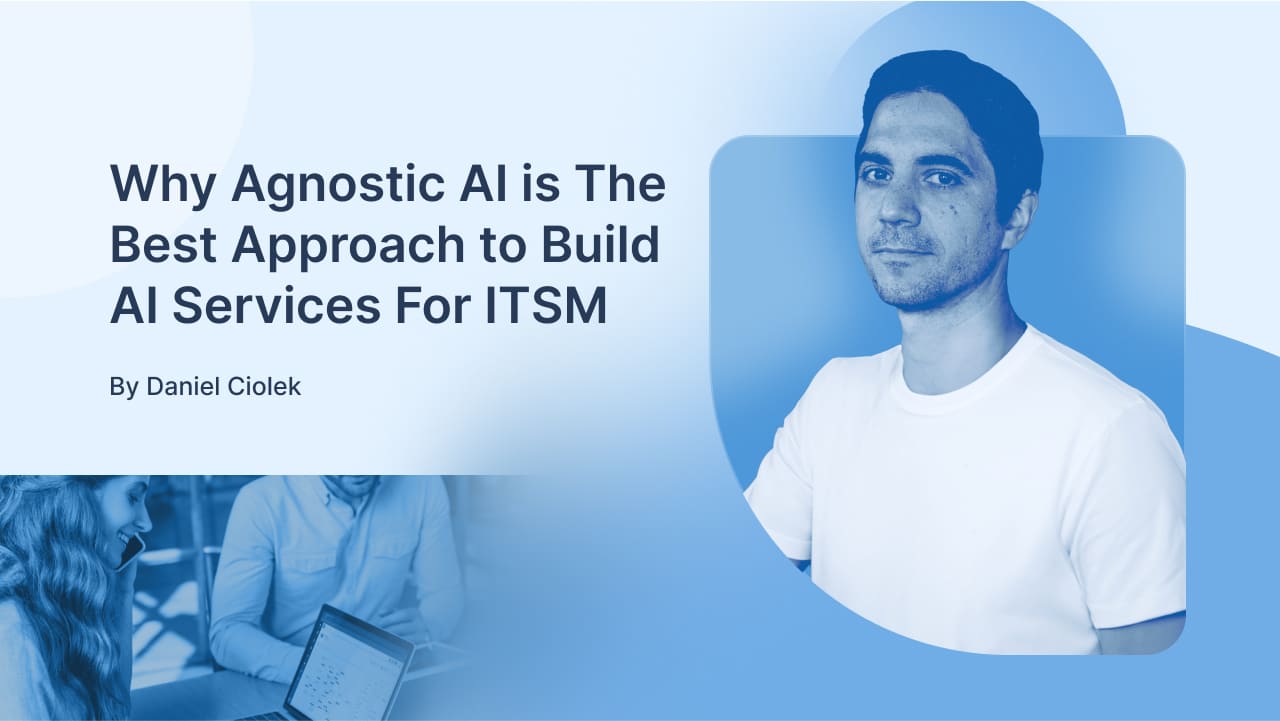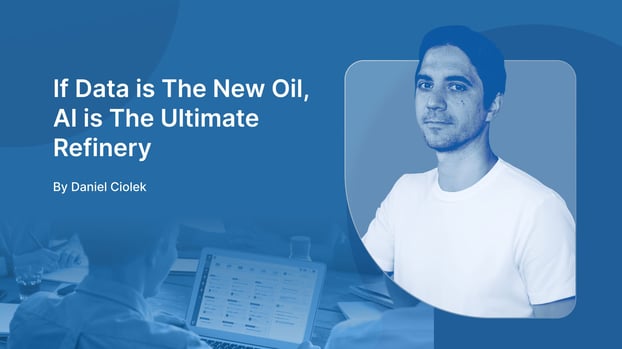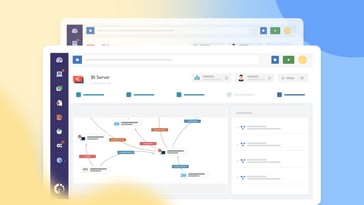The phrase "Data is the new oil" has become a popular metaphor to highlight the immense value that data holds in modern organizations. And just as oil in its crude form, it requires refining to unlock its true potential.
Raw data needs to be processed and analyzed to extract meaningful insights and drive informed decision-making. This is where Artificial Intelligence (AI) comes into play. AI acts as the ultimate data refinery, giving us the potential of transforming vast amounts of information into actionable insights.
Over the past few years, AI – and in particular Machine Learning (ML) – has been widely applied to process data and extract insights. However, the emergence of Large Language Models (LLMs) has revolutionized the field, leading to the development of numerous new tools designed to enhance data processing capabilities. This evolution requires us to revisit and rethink our data strategy to stay ahead in the rapidly changing landscape.
However, shifting to new AI paradigms is neither easy nor inexpensive. Just as an oil refinery requires significant infrastructure and investment, so too does the effective implementation of AI technologies.
Organizations must invest in the right tools, platforms, and expertise to build a robust and flexible data processing framework. Additionally, they must navigate the complexities of data security and privacy, ensuring that sensitive information is protected at all stages of the refining process.
In this blog post, we will explore how we harness valuable Service Management data with AI at InvGate, discuss the necessary infrastructure investments, and address the challenges of managing data securely. Additionally, we’ll explore the traditional ML data refinement pipeline, and address the ways in which it can be enhanced with LLMs.
Let’s begin.

The nature and value of data
Data has emerged as one of the most valuable assets for modern organizations. It is reshaping industries by enabling smarter decision-making and new business models.
Organizations collect a wide variety of information, ranging from customer feedback to IoT sensor readings. This data can be categorized into two main types: structured and unstructured. Understanding them is crucial for effectively harnessing their potential.
- Unstructured data, such as customer feedback, usually consists of free text that lacks a predefined format but may hold highly valuable insights. LLMs can be very effective at processing this type of data.
- Structured data, like IoT device metrics, is highly organized and easily searchable (e.g., devices currently connected to your network). Traditional ML techniques are usually enough to process this type of data.
For instance, in the realm of Service Management, data plays a pivotal role. Analyzing information can enable predictive maintenance scheduling for devices, preventing potential failures and reducing downtime.
It can also facilitate the quick detection of anomalies and major incidents, allowing for faster resolution and minimizing the impact on business operations. Additionally, data-driven insights can enhance root cause analysis of recurrent incidents, leading to more effective problem-solving and continuous improvement in service delivery.
The true value of data lies in its potential to fuel actionable insights. By analyzing it, organizations can uncover hidden patterns, predict future trends, and make informed decisions.
The traditional data refinement pipeline: Turning data into value with ML
No matter how valuable the data, its sole existence is not enough to be data-driven. For that to happen, organizations need to create a data refinement pipeline, where information is ingested, processed, stored, and analyzed. Let’s take a look at the technical components needed to turn data into value.

Data ingestion and storage
The first step in the data refinement pipeline is data ingestion, where data from various sources is collected and stored. This stage is crucial for ensuring that the information is both accessible and usable for downstream processes.
At this stage, two types of solutions are needed:
- Data orchestration tools: Technologies like Apache Airflow allows us to orchestrate multiple data sources to ensure a smooth and automated flow of the data into different stages of the data refinement pipeline.
- Data lakes and warehouses: Data lakes provide a scalable repository for storing structured and unstructured data. Meanwhile, data warehouses (like Amazon Redshift) offer optimized solutions for resolving complex queries.
Data preprocessing and cleaning
Before data can be analyzed, it must be preprocessed and cleaned to ensure quality and consistency. For instance, structured data might contain missing values or multiple nomenclatures for the same things. On the other hand, unstructured data may have duplicates or even text encoding issues. Feeding data directly to the AI models without filtering these sorts of “impurities”, may degrade their outputs’ quality.
To get rid of inconsistencies in the data several techniques are normally used, including:
- Data cleaning: ML algorithms can be used to detect and correct anomalies, handle missing values, and remove duplicates.
- Data transformation: Techniques such as normalization, encoding, and scaling are applied to prepare data for analysis.
- Feature engineering: This step involves creating new features from raw data that can improve model performance. Techniques like one-hot encoding, binning, and embeddings are commonly used.
AI model training
With clean data, the next phase involves training AI models. This stage requires significant computational resources and specialized tools, such as:
- ML frameworks: Frameworks like PyTorch and scikit-learn provide the necessary libraries and tools for developing and training ML models. These frameworks support a wide range of algorithms, from linear regression to deep learning.
- Compute resources: Training AI models (especially deep learning models) requires powerful computational infrastructure. Cloud-based GPU and TPU instances (offered by providers like AWS, Google Cloud, and Azure) deliver the necessary processing power to handle large-scale model training efficiently.
- Hyperparameter tuning: Optimizing model performance involves tuning hyperparameters, using techniques such as grid search and Bayesian optimization.
- Model validation: Cross-validation techniques, such as k-fold cross-validation, are used to evaluate model performance and prevent overfitting. These techniques ensure that the model generalizes well to unseen data.
AI model deployment and monitoring
Once a model is trained and validated, it needs to be deployed into production and continuously monitored to ensure its effectiveness.
The steps involved in this stage include:
- Model serving: Tools like TorchServe, and cloud-based services like AWS SageMaker Endpoint facilitate the deployment of models as RESTful APIs, enabling real-time predictions.
- Containerization and orchestration: Containerization technologies (such as Docker) and orchestration platforms (like Kubernetes) streamline the deployment process, ensuring that models can be scaled and managed efficiently in production environments.
- Monitoring and maintenance: Continuous monitoring is essential to ensure that models perform well over time. Retraining pipelines can be automated to update models with new data, ensuring they remain relevant and accurate.

Beyond Traditional ML: Simplifying AI Training for Better Outcomes
Up to now, we have described what can be called “the traditional ML pipeline.” But, in order to leverage the advantages of LLMs, this needs to be updated.
While traditional ML pipelines remain valuable in many domains, LLMs have opened up new and exciting possibilities in data processing and interpretation. This novel approach unlocks a potential that was previously out of reach, allowing us to leverage AI with little to no training.
LLMs like GPT-4, Claude-3, and Llama-3 are at the forefront of this shift, changing how we interact with and understand information.
The key to these models' versatility lies in their extensive pre-training. Unlike earlier AI models that need extensive training on specific datasets, these advanced LLMs come pre-trained on a vast and diverse collection of data. This comprehensive foundation allows LLMs to handle a wide range of tasks with impressive flexibility and insight.
To leverage these powerful models effectively, several key techniques have emerged: zero-shot and few-shot learning, fine-tuning, and retrieval augmented generation.
Zero-shot and few-shot learning
LLMs are designed to generalize from very few examples or even none at all. This capability is particularly useful for rapid prototyping and in scenarios where data collection is challenging.
- Zero-shot learning: The LLM performs tasks without any specific training examples, relying on its pre-trained knowledge to make inferences.
- Few-shot learning: The LLM is provided with a limited number of examples, allowing it to adapt quickly to new tasks with minimal data.
LLM fine-tuning
Leveraging pre-trained models through fine-tuning significantly reduces the time and resources required for training. These models can be fine-tuned for specific tasks with relatively small datasets. This approach enables organizations to quickly adapt state-of-the-art models to their unique needs without the need for extensive computational resources.
A key benefit of fine-tuning over full model training is the substantial improvement in performance and accuracy for specific tasks. By starting with a pre-trained model, which has already learned a wide range of features and patterns from a vast dataset, fine-tuning allows for more precise adjustments to be made based on the nuances of a particular task.
This process not only enhances the model's effectiveness in specialized contexts but also helps mitigate issues related to overfitting, as the knowledge embedded within the pre-trained model provides a robust starting point.
Retrieval Augmented Generation
Retrieval Augmented Generation (RAG) is an innovative approach that empowers the strengths of generative models by allowing them to search for additional information. RAG models retrieve relevant documents or information from a large corpus and use this retrieved data to generate more accurate and contextually relevant responses.
RAG enhances the accuracy and relevance of generated responses, making them particularly useful for tasks requiring up-to-date information or detailed knowledge. For instance, Knowledge Management and customer support are some areas where RAG can significantly improve performance and user satisfaction, providing a conversational interface to search results that allows follow up questions.
Unlike fine-tuned models, which rely solely on their pre-existing knowledge, models using RAG actively retrieve and integrate relevant documents or data from a dynamic corpus during the generation process. This enables models to generate responses that are not only accurate but also dynamically up-to-date.
Challenges in handling and securing data
It’s important to remember that harnessing AI's potential comes with its own set of challenges, particularly in handling and securing data. As organizations process vast amounts of information, ensuring data privacy, security, and compliance is crucial.
Data privacy concerns
The importance of data privacy cannot be overstated. Organizations must navigate regulations like GDPR and CCPA, which mandate stringent data handling requirements. Techniques such as anonymization and pseudonymization can mitigate privacy risks by protecting identities while allowing data analysis.
Ethical considerations
Compliance with data protection laws is both a legal and ethical obligation. Organizations must ensure fairness, transparency, and accountability in their data practices. This involves being transparent about data usage, obtaining informed consent, and allowing individuals to exercise their data rights.
Data security measures
Securing data against breaches and cyberattacks is a top priority. Key measures include:
- Encryption: Protecting data both at rest and in transit using AES and SSL protocols.
- Access controls: Limiting data access to authorized personnel through Role-Based Access Control (RBAC) and Attribute-Based Access Control (ABAC).
- Data retention policies: Storing data only as long as needed and discarding outdated information to reduce exposure risks.
- Regular audits and monitoring: Continuous monitoring and regular security audits using tools like Intrusion Detection Systems (IDS) and Security Information and Event Management (SIEM) platforms.
By prioritizing data privacy, adhering to ethical practices, and implementing robust security measures, organizations can build a trustworthy data infrastructure, fostering customer trust and supporting AI-driven growth.
Embracing AI as the ultimate refinery
AI serves as the ultimate refinery, transforming raw data into invaluable business insights. This journey, though complex, offers immense rewards, from optimizing operations to driving innovation. LLMs can significantly enhance this process by reducing training costs and complexity, unlocking insights that were previously unattainable.
While AI's benefits are clear, addressing data privacy and security is crucial. Implementing robust security measures and ensuring transparency in AI models build trust and compliance. By proactively tackling these challenges, organizations can harness AI's power while safeguarding data integrity.
Embracing AI is not just a technological shift but a strategic imperative. Converting raw data into actionable insights drives growth and efficiency. As AI and cloud computing evolve, they make advanced AI capabilities more accessible and scalable. Organizations that invest in the right AI infrastructure, prioritize data security, and stay ahead of technological advancements will unlock the full potential of their data assets.















